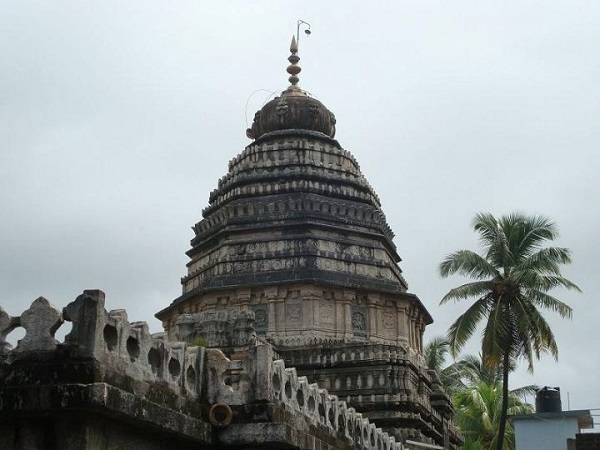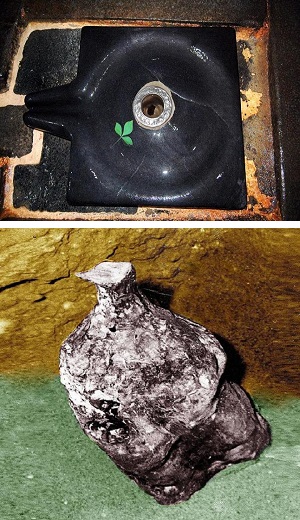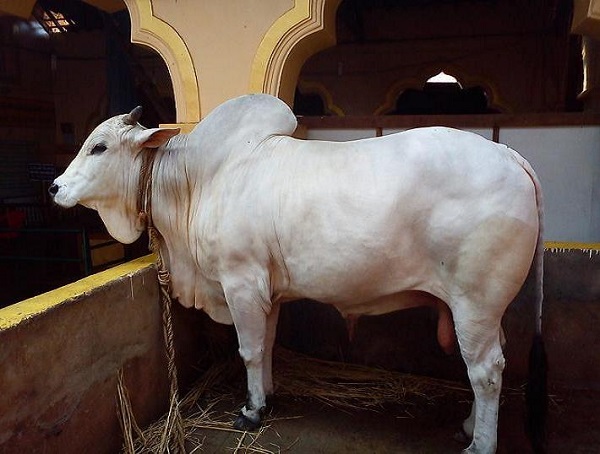Apr 19, 2024
Apr 19, 2024
by Rati Hegde

As a child, the only time I heard about Gokarna was when somebody died, since it is one of the Mukti-Kshetras (place of salvation), of Karnataka. I hardly knew about the temples there or their importance. Before I write further, let me acquaint you with the history of the shrine of Mahabaleshwara…
Ravana, on the orders of his mother, does Tapas in the sacred Kailas Parbhat, to obtain the Atma-Linga of Lord Shiva. He knew that if he had the Atma-Linga of Shiva, he would face certain victory over all his enemies; the worship of this Linga would make him all powerful.
 Pleased with Ravana’s devotion and prayers, Lord Shiva grants him the one and only Atma-linga and tells him that the Linga would be established at the place where it touches the ground. All the Gods get worried and approach MahaVishnu, who guides Lord Ganesha (Shiva’s son) to see to it that the Atma-Linga never reaches Lanka.
Pleased with Ravana’s devotion and prayers, Lord Shiva grants him the one and only Atma-linga and tells him that the Linga would be established at the place where it touches the ground. All the Gods get worried and approach MahaVishnu, who guides Lord Ganesha (Shiva’s son) to see to it that the Atma-Linga never reaches Lanka.
When Ravana reaches the shores of Gokarna, he realizes that it is time for his ‘SandhyaVandana’ and looks out for a person to hold the Atma-Linga till such time as he finishes the rituals. Ganesha comes there in the guise of a cowherd and reluctantly agrees to hold the Atma-Linga. He places the condition that he would keep the Atma-Linga on the ground if he would find it too heavy; Ravana counter conditions that Ganesha would have to call out to him at least thrice before he does so. The moment Ravana finishes his ablutions in the sea and sits for the rites of SandhyaVandana, Ganesha rapidly calls out to Ravana three times and places the Atma-Linga on the ground, where it develops roots, believed to be upto Patala Loka.
Ravana in his anger, strikes a blow on Ganesha’s head – as a result, Ganesha’s head develops a depression on the top and his legs become smaller and stouter. Next, Ravana tries to dislodge the Atma-Linga from the ground, but fails to do so after innumerable attempts. Ravana accepts defeat and departs to Lanka, but before doing so, names the Atma-Linga as ‘Mahabaleshwara’ – the all powerful One. Since the Atma-Linga is shaped in the form of a cow’s ear, the place is called as ‘Gokarna’ – ‘Go’ meaning Cow and ‘Karna’ meaning Ear.
For centuries, people have performed the final rites of their beloved ones at the banks of Kotitheertha, the holy pond of Gokarna Kshetra. While this is one of the important places at Gokarna, the most important temple here is that of the Mahabaleshwara Shrine; the other important places are the Tamara Gouri temple (just behind the Mahabaleshwara Temple) – the temple of Maa Parvati, and the MahaGanapati Temple (close to the Mahabaleshwara Temple) – the temple of the short stout Ganesha with a depression on His head. This is probably one of the rare Shivalayas in the South where one can have a ‘Sparsha Darshan’ ie. one can touch the Atma-Linga while worshiping it. In almost all the other famous Shiva Shrines in the South, one can only view the Linga from afar, not touch it and worship it. Another ritual which is followed by devout pilgrims is that of doing Abhisheka of Ganga water on the Atma-Linga, especially after visiting Kashi, Haridwar or Hrishikesh.
A few years ago came the news that the administration of the temple had been restored to Shree RamachandraPura Matha, headed by Gokarna Mandaladeeshwara Jagadguru Shankaracharya Shree Shree RaghaveshwaraBharati Mahaswamiji. The first Shivaratri festival after Pujya Guruji took over the administration of the shrine saw the glorious continuous Abhisheka of the Atma-Linga with GangaJal procured from Haridwar, not just by the priests, but by the thousands of devotees who partook in this holy occasion with religious fervour. Mahabaleshwara must have felt the ripples of devotion with as much bliss as the devotees! Pujya Guruji announced that Lord Mahabaleshwara would hear the chanting of a Koti Rudra Japas (one crore Rudra Japas), within the temple premises. Every day one finds big and small groups of Bhaktas chanting the Rudra Japa at the Mahabaleshwara Shrine. Anna Daana Seva (like the ‘Langar’ in North Indian Temples) has also been commenced for the Bhaktas at the Shrine. News in prominent newspapers, of the Kotitheertha pond being cleaned and of a Silver Dwaar at the main entrance brought a smile to my face.
Recently I visited the temple after many years.
What positive energy!
The entire temple premise was cleaned at least twice every day … though I visited on a holiday, when thousands of devotees were visiting, the temple premises were very clean. Devotees waited patiently for their turn of ‘Sparsha Darshan’ in a regulated, fast-moving queue; aged and ill devotees with their caretakers, were allowed to have special Darshan quickly; the Sevas were booked at the ticket counter for a fixed fee and only priests with identity badges were allowed to escort the devotees for the special Sevas (like Phala-Panchaamrit Seva, etc.); the Atma-Linga was offered Abhisheka with Ganga Jal daily during the Puja hours; devotees were repeated informed by the authorities to visit the Anna Daana Sthala (place for lunch) in the afternoon, when the temple was closed for Darshan.

The most pleasant surprise for me was the Goushala in the temple premises. Here I saw the most gentle of bulls, a huge one, and some other cows and calves, all in one place. Devotees, even children, were offering them bananas and touching them without any fear. Another service offered was that of free medical check-up and sale of Gou-products within the temple. The proceeds of the Gou-products were to be specifically used for the Conservation of the Indian Breed of Cows. My teenaged son participated in the ‘Sparsh Darshan’ and the feeding of Gou-Mata with total devotion, as did many other devotees.
After the divine Darshan, my family and I went to the Gokarna Beach which is minutes away from the temple. The clean beach seemed too good to be true for a Mumbaikar like me. Contrary to news about shady activities of foreigners, I saw families enjoying their time at the beach. The foreigners too seemed to respect the holiness of the place. My son enjoyed the visit to Gokarna so much that he can’t wait to go back … what a contrast to my forced visits in my childhood. Har Har Mahadev! Jai Jai Mata, Jai Gou Mata!
How to visit: Gokarna is in the Uttara Kannada district of Karnataka, on the Western Coast of India. It is accessible by road from Mumbai (about 700kms), Bangalore (580kms) and Mangalore (240kms). It is also accessible by train on the Konkan Railway route. The closest airport is Dabolim, Goa.
It has beautiful clean beaches, the most famous one being the Om Beach. People can stay at the various hotels close to the beaches and the temples; they can also stay at the houses of the Priests of the temple, since most of the houses have affordable and clean boarding and lodging for the pilgrims.
Gokarna can be visited all round the year.
20-Apr-2014
More by : Rati Hegde